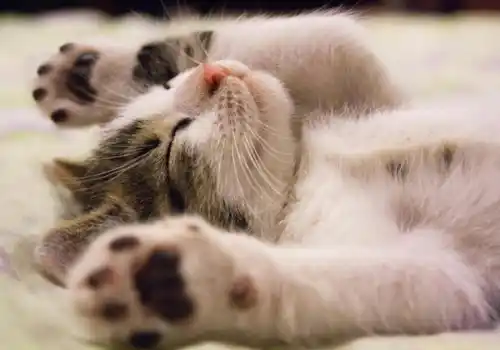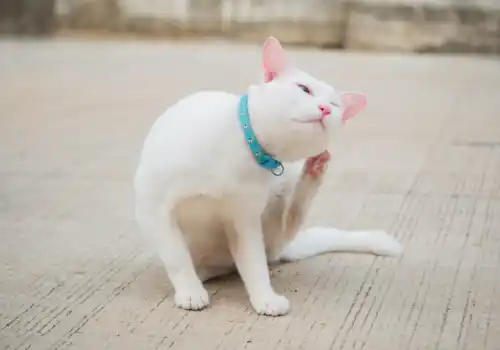Want to stop your cat hiding from visitors? Follow veterinary behaviourist Jon Bowen's top tips.
Q How can I stop my cat hiding from visitors?
Veterinary behaviourist Jon Bowen says: Faced with trouble, a cat's first reaction is to keep at a distance, observe and then run away or hide. They cannot resist this urge, and trying to stop cats from hiding could cause them immense stress. This means that the real question should be 'how do I stop my cat wanting to hide from visitors?'.
Cats have differing personalities, from outgoing and sociable to cautious and selfcontained. Personality is established by a combination of genetic influences and early experience, neither of which can be altered in an adult cat. To have the best chance of getting a confident, sociable cat, choose a kitten that is properly socialized and has sociable parents.
The starting point is therefore to understand your cat's character so that you can really help your cat rather than confl icting with his underlying nature. Look at how he reacts in situations when there are no unfamiliar people around. If your cat is cautious and easily startled even around people that he ought to know very well, then he is unlikely to accept strangers.
If your cat is generally sociable around family but is startled in certain situations, such as when people walk into a room, or when there is a lot of movement or noise, then these are the situations you must avoid with visitors. Cats often have specific preferences when it comes to maintaining a distance from people.
If your cat has a preference for hiding under things then make sure there are good spots to hide in the room where visitors are, particularly ones close to the entry point to the room. Get your cat used to using these hiding places by putting a small bowl with tasty treats in each spot. Also, consider installing a feline pheromone diffuser in the room where visitors will be, as this marks the room as a source of security.
Next, you need to lay down some ground rules for when there are visitors:
- Leave cats alone while they are hiding; don't rake them out to make them meet people
- When visitors come, restrict them to one room of the house so that your cat knows he is free to move around the rest of the house. It is important to keep visitors away from your cat's eating, drinking and toileting areas as these are places your cat must have access to at all times
- Visitors should stay seated if the cat enters the room and avoid eye contact with him
- No matter how much a visitor says things like 'cats like me' or 'I just want to make friends', do not allow them to try and befriend the cat. Watch these people like a hawk!
So far we have only talked about creating the right conditions for helping a cat to get used to visitors. The most difficult part is encouraging your cat to come into the room with visitors. Draw up a list of volunteers who you can use for 'visitor training' and put them in order of how alarming they may be to your cat.
Starting with the least scary and most trustworthy people, try tempting your cat to come out of his hiding place to get some extra tasty food from a bowl placed near his hiding spot. As you repeat the exercises and your cat becomes confident to venture further, you should add more treat bowls placed further away from the hiding place.
The objective is to get to the point that your cat has the confidence to walk around the house while a visitor is around. Only once your cat is comfortable to move around should you add some temptation for your cat to come to the threshold of the room your visitor is in, and then inside. As your cat gains confidence, you can move down the list to include other people. It can take a long time to build confi dence in a cat, but as long as you take things very slowly then you should make progress, and don't expect too much!
Tilly & visitors
 Cat care expert and author Celia Haddon tells us about how her rescue cat Tilly came out of her shell: "Tilly used to hide under the bed every time visitors came to the house.
Cat care expert and author Celia Haddon tells us about how her rescue cat Tilly came out of her shell: "Tilly used to hide under the bed every time visitors came to the house.
"At first I thought she must be feral, a cat that had never been handled by humans. If a kitten doesn't meet people when they are very young, they will always be fearful of them. The first signs that Tilly was not feral came when she started letting me - and me only - stroke her.
"After about six months she began to accept other humans. At first she warmed to the nurses who used to come regularly to my sick husband. She began walking into the room while they were there, looking at them from a distance and then slowly, over the months, allowed them to stroke her.
"My part in changing her behaviour was passive. I never forced her to be in a room with other people. She was allowed to come and go as she pleased. Once she knew she had a choice and that nobody was going to force affection on her, she became more relaxed. Nowadays, she still doesn't like noisy strangers, but she no longer feels the need to hide under the bed."







